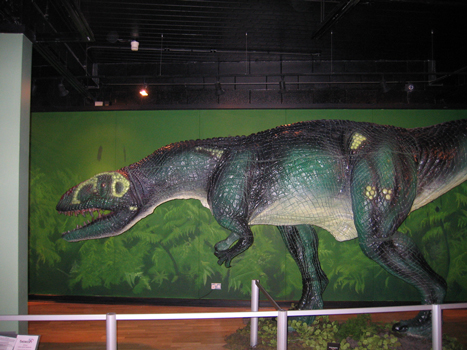Famous English Author Writes about Dinosaurs
Today, February 7th, is the 200th anniversary of the birth of the English author Charles Dickens. A number of events are being held around the world to commemorate the birthday of one of the most famous of all English writers – the writer of such works as “Oliver Twist”, “Great Expectations”, “David Copperfield” and of course the universally popular “A Christmas Carol”. From a dinosaur enthusiast’s perspective, Dickens lived through a most exciting period of science history, a time when the study of fossils was being placed on a more professional footing and by the end of his life dinosaurs were a worldwide phenomenon.
Charles Dickens and Dinosaurs
Dickens was born in Portsmouth (Hampshire, England) in 1812. Throughout his life he wrote about the nascent development of Earth sciences that we now know as palaeontology and geology. He lived during a time of great scientific discovery, a time when strange rocks found in the Earth came to be studied and understood for what they were – the remains of long, extinct animals and plants that had once been part of the fauna and flora of prehistory.
In the journal “All Year Round”, with which Charles Dickens was very much associated, there were reports on the discovery of marine reptile fossils found in the Dorset area (southern England). He did much to publicise and popularise the discoveries of ichthyosaurs, plesiosaurs and flying reptiles. Dinosaurs even make a brief appearance in one of Dickens’s most famous novels – “Bleak House”. This novel, written in 1852, in common with many other books by Dickens, mirrored much of what was going on in the country at the time. Dinosauria and other prehistoric animals were catching the general public’s imagination and a contemporary author such as Dickens was almost obliged to write about them.
The Novel “Bleak House”
In “Bleak House” he writes:
“Implacable November weather. As much mud in the streets as if the waters had but newly retired from the face of the Earth, and would it not be wonderful to meet Megalosaurus, forty feet long or so waddling like an elephantine lizard up Holborn Hill.”
At the time of his birth, the term dinosaurs and the science of palaeontology was virtually unknown. By the time Dickens died in June 1870, the Order Dinosauria had been established and a number of genera had been recognised and other prehistoric creatures such as the marine reptiles and pterosaurs (flying reptiles) were becoming much better understood.
A Life-size Replica of Megalosaurus
Picture credit: Everything Dinosaur
To view models and replicas of Megalosaurus and other prehistoric animals (whilst stocks last): Natural History Museum Dinosaur Models and Replicas.







Leave A Comment